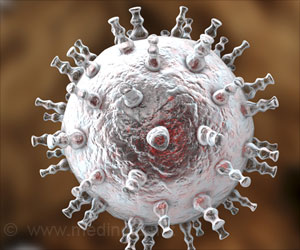Diagnosis can be made in 30 minutes, for a laboratory-scale cost of less than 1 US Dollar per genosensor. The components cost less than USD 200. The device exists at the laboratory scale, and the technology can be transferred to any company with the wherewithal to mass-produce it.
“Our genosensor can immobilize a simple DNA strip used as a capture probe. Under appropriate conditions, the immobilized strip binds to a complementary DNA strip contained in the liquid sample to be analyzed.
The process, hybridization, explains the presence of SARS-CoV-2 in the sample, which may be saliva or another body fluid,” chemist Juliana Coatrini Soares told, the first author of an article describing the research and published in Materials Chemistry Frontiers.
The device contains a self-assembled monolayer of 11-mercaptoundecanoic acid chemically bonded to glass electrodes containing micrometric gold leads or surfaces containing gold nanoparticles.
This environment is able to immobilize the simple DNA or RNA strip used as a capture probe. Hybridization with the complementary strip is shown by means of variations in physical parameters detected by electrical or electrochemical impedance spectroscopy and localized surface plasmon resonance.
“After hybridization, there is an increase in electrical resistance on the surface of the sensor, which can be monitored by a low-cost impedance analyzer costing about USD 100, and developed in our lab by engineer Lorenzo Buscaglia, a member of the group.
Another effect of hybridization between the capture sequence and the complementary SARS-CoV-2 sequence is a shift in the absorbance peak in the transmitted spectrum, which can be monitored by means of localized surface plasmon resonance using a spectrophotometer,” said chemist Paulo Augusto Raymundo-Pereira, a researcher at IFSC-USP who took part in the research.
The highest sensitivity achieved in the study corresponded to 0.3 copies per microliter, which is sufficient to detect the DNA sequence in saliva or other body fluids. The complementary SARS-CoV-2 sequences were also diagnosed by machine learning techniques.
“By applying machine learning algorithms to image processing, we were able to obtain a high degree of precision in distinguishing between the different concentrations of complementary SARS-CoV-2 DNA sequences,” Raymundo-Pereira said.
Interactive document mapping (IDMAP) showed a clear separation between complementary DNA sequences at various concentrations and samples containing a non-complementary sequence or other DNA biomarkers unrelated to SARS-CoV-2.
“The advantage of using several detection methodologies is the versatile mode of operation so that the diagnostic method can be implemented in accordance with the reality of each country, or of the different regions of continent-sized countries like Brazil.
Our genosensor is also promising as a detector of genetic material from novel variants of SARS-CoV-2. To do this, if the variant’s genetic sequence is known, you simply swap out the simple DNA strip used as the capture probe,” Oliveira Junior explained.
Source: Medindia



